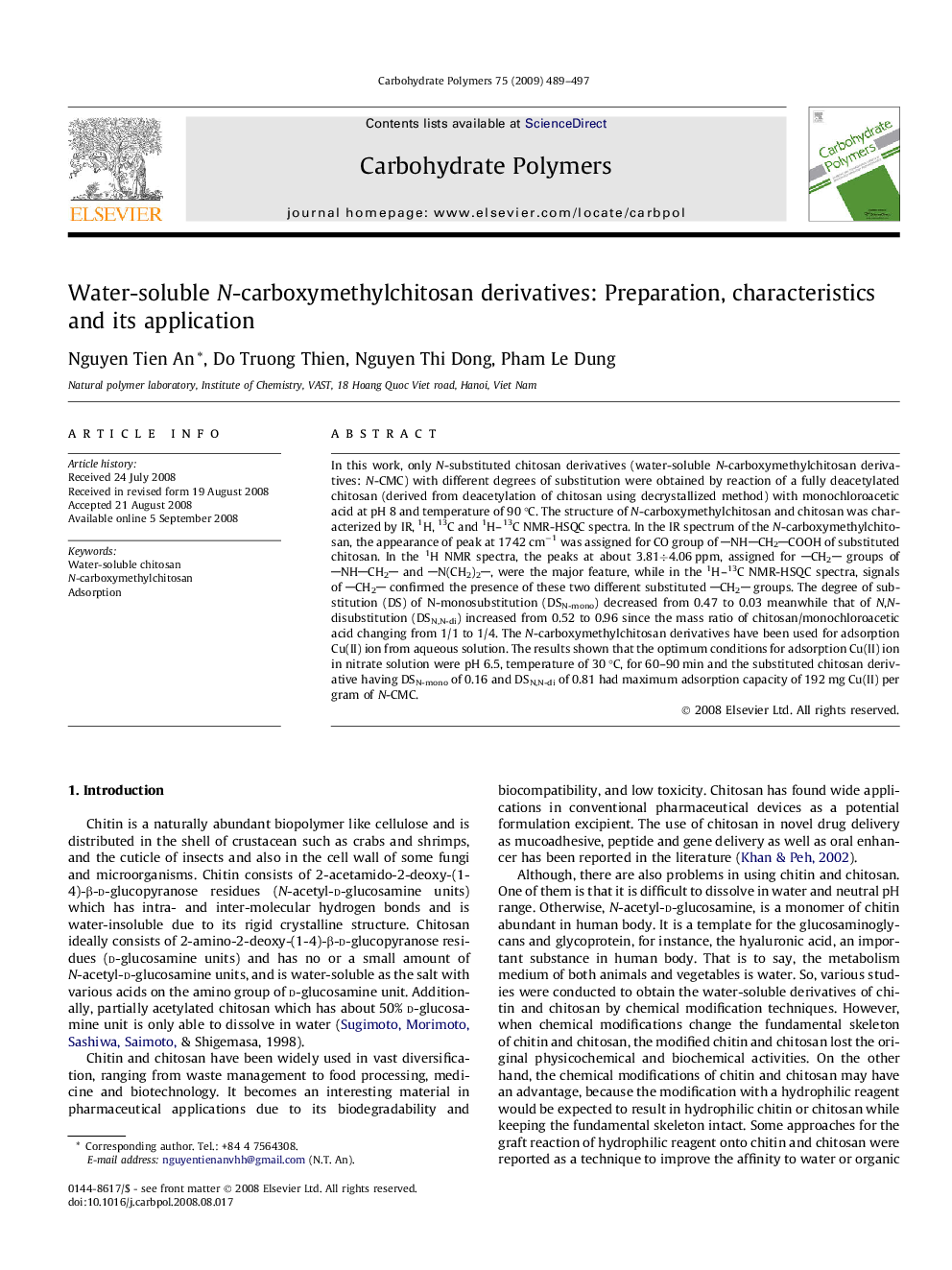| Article ID | Journal | Published Year | Pages | File Type |
|---|---|---|---|---|
| 1378978 | Carbohydrate Polymers | 2009 | 9 Pages |
In this work, only N-substituted chitosan derivatives (water-soluble N-carboxymethylchitosan derivatives: N-CMC) with different degrees of substitution were obtained by reaction of a fully deacetylated chitosan (derived from deacetylation of chitosan using decrystallized method) with monochloroacetic acid at pH 8 and temperature of 90 °C. The structure of N-carboxymethylchitosan and chitosan was characterized by IR, 1H, 13C and 1H–13C NMR-HSQC spectra. In the IR spectrum of the N-carboxymethylchitosan, the appearance of peak at 1742 cm−1 was assigned for CO group of NHCH2COOH of substituted chitosan. In the 1H NMR spectra, the peaks at about 3.81÷4.06 ppm, assigned for CH2 groups of NHCH2 and N(CH2)2, were the major feature, while in the 1H–13C NMR-HSQC spectra, signals of CH2 confirmed the presence of these two different substituted CH2 groups. The degree of substitution (DS) of N-monosubstitution (DSN-mono) decreased from 0.47 to 0.03 meanwhile that of N,N-disubstitution (DSN,N-di) increased from 0.52 to 0.96 since the mass ratio of chitosan/monochloroacetic acid changing from 1/1 to 1/4. The N-carboxymethylchitosan derivatives have been used for adsorption Cu(II) ion from aqueous solution. The results shown that the optimum conditions for adsorption Cu(II) ion in nitrate solution were pH 6.5, temperature of 30 °C, for 60–90 min and the substituted chitosan derivative having DSN-mono of 0.16 and DSN,N-di of 0.81 had maximum adsorption capacity of 192 mg Cu(II) per gram of N-CMC.
